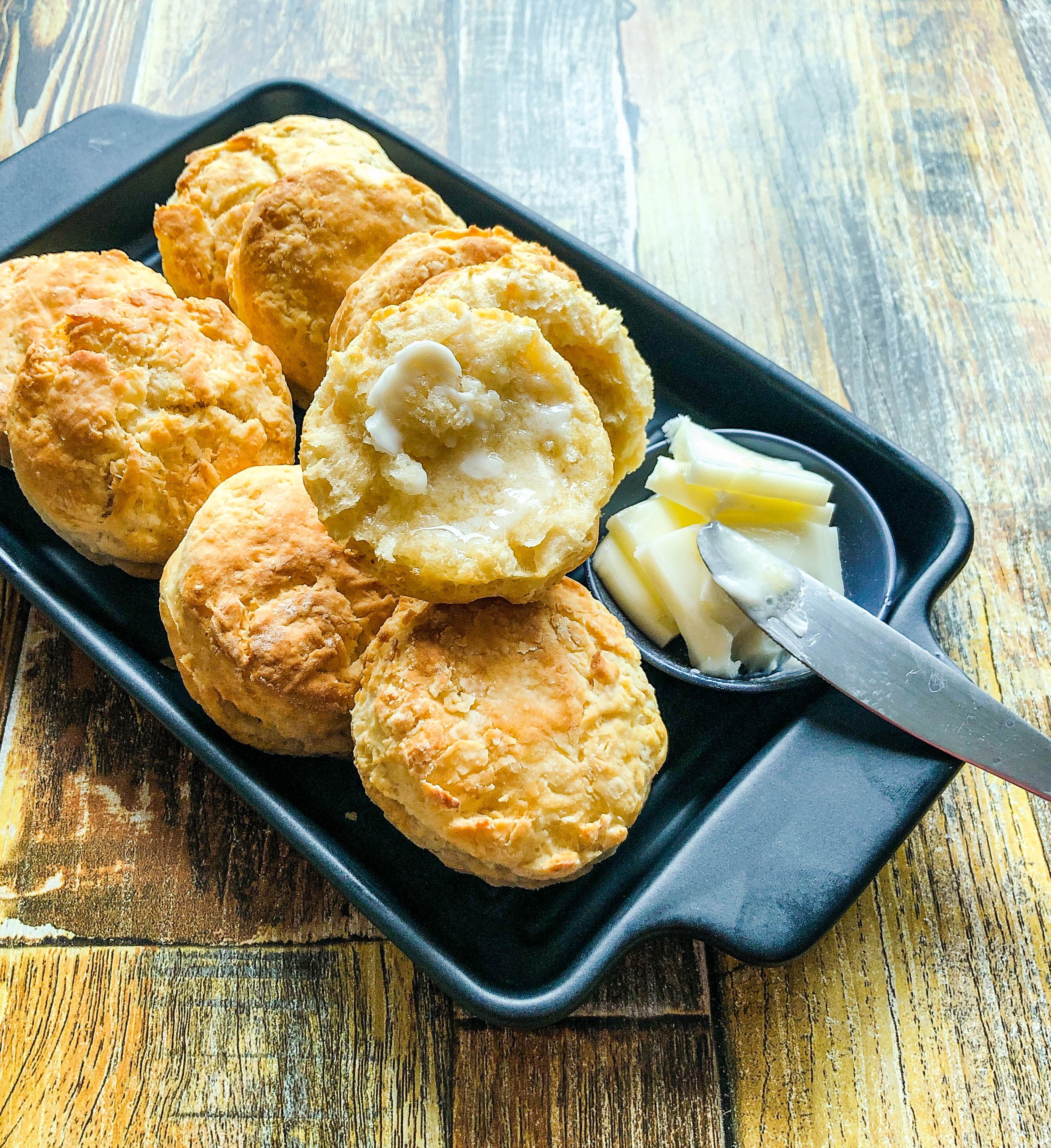Flaky Biscuits
Tender all butter biscuits with flaky pull-apart layers.
Flaky Biscuits
Makes 12 - 13 (6 cm / 2.5 in) biscuits
My mother wasn’t much of a baker. Because of this, most of our baked goods were store-bought. I have fond memories of slice and bake or pull apart cookies and biscuits in a can and later individually frozen biscuits. I can vividly remember the first time I helped her make biscuits in a can. I carefully read the instructions and preheated the oven before moving on to how to open the can. I was disappointed that the paper pulled off in a spiral but the can remained firmly sealed. My mom helped me to tap the can against the corner of the kitchen counter only for me to be surprised by the “pop” that revealed the biscuits. Once baked, we ate them with a full breakfast and I was so happy that the biscuits pulled apart like the picture on the can.
I struggled to make delicious homemade biscuits for years but once I perfected my recipe, I was able to easily convert it to a flaky biscuit. The layers are achieved through laminating or making layers of dough and butter that will separate some when the water in the butter creates steam while baking. This lamination is easily achieved by easily cutting the dough and stacking halves on top of each other. Some recipes use a pattern closer to that of laminating croissants but, I prefer my simpler method for ease on a Saturday or Sunday morning. Bake the biscuits in a hot oven and you are rewarded with a delicious breakfast bread. Serve with butter and your favorite toppings.
“Recipe Tips:
1. Attempt to complete the flattening and stacking (laminating) steps quickly so the butter does not warm up too much.”
Ingredients
227g (1.75 c) all purpose flour
65g (0.50 c) whole wheat flour or AP flour
12g (1 T) baking powder
10g (2 t) sugar
5g (1.25 t) kosher salt
2g (0.50 t) baking soda
112g (0.50 c) butter, cut into cubes and kept cold – divide the butter into 42g (3 T) and 70g (5 T)
200ml (1 c) buttermilk
Recipe Know-how
1. In a large bowl, combine the dry ingredients mixing well.
Add the smaller portion of butter to the flour and toss with the flour.
Rub the butter into the flour thoroughly with your fingertips.
The flour should look like damp sand.
The flour should hold together when squeezed but crumble apart when touched.
Add the remaining butter and toss with the flour.
Use your fingers to flatten the butter into large shards.
The butter should be look quite chunky.
Toss the flattened butter pieces well with the flour.
Add the buttermilk and using a dough scraper, toss together to moisten all of the flour and a rough dough forms.
Pour on to a clean work surface.
You may not have a cohesive dough yet.
Using your hands, press any loose flour and dough into a rectangle about 2.5cm (1 in) thick.
Flatten gently and cut in half to make two rough squares placing one half on top of the other.
Flatten again into a rectangle about 2.5cm (1 in) thick.
Repeat 4 – 5 times more.
With each stacking of dough, you are creating layers. The dough will also begin to become more cohesive.
Wrap in plastic wrap and refrigerate for 1 hour.
2. Preheat oven to 200C / 400F.
Line a rimmed baking sheet with parchment paper and set aside.
3. On a lightly floured surface roll out the dough to 2.5 – 4 cm (approx. 1 – 1.5 in) thick.
Rolling the dough thicker will result in taller biscuits with a smaller yield.
Using a sharp 6cm (approx. 2.5 cm) cookie cutter or glass, cut out the biscuits and place onto the prepared pan.
Using a larger cookie cutter will result in a smaller yield.
Gently press the dough back together and reroll and cut the scraps until all of the dough has been used.
Bake for 10 – 12 minutes or until golden brown.
Cool for 2 – 3 minutes.
4. Serve.







